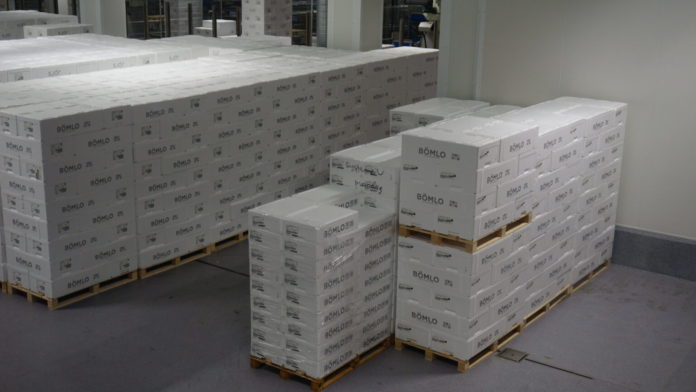The supply of smaller fish has slowed since earlier this autumn.
“There’s a slight correction downward for next week,” an exporter told SalmonBusiness, noting that prices for 3-6 kg fish are down NOK 2.
“Fish weighing 3-4 kg is priced at NOK 67-68 ($6.16-6.26/€5.70-5.78), 4-5 kg at NOK 69-70 ($6.34-6.43/€5.87-5.96), while 5+ kg fish has been hit hard, priced at NOK 72-73 ($6.62-6.71/€6.12-6.20) for 5-6 kg and NOK 76-77 ($6.99-7.09/€6.46-6.55) for 6+ kg,” he said.
Average fish weights have risen, linked to good growth and reduced harvests of smaller fish due to sea lice issues in the north. Prices for smaller fish, particularly 2-3 kg, have also fallen, now priced at NOK 57-58 ($5.24-5.33/€4.85-4.93).
A difficult market for large fish
“It hasn’t been an easy week, and more fish is coming next week,” said one exporter, citing a major player with a large supply of “Gannet-fish,” referring to the processing boat the Norwegian Gannet.
“Prices are dropping significantly, especially for 5+ kg fish,” another trader noted. Larger fish over 6 kg are seeing particularly steep declines in price.
Some predict stable prices for 3-4 kg and 4-5 kg fish at NOK 71-72 ($6.53-6.62/€6.04-6.12) and NOK 73-74 ($6.73-6.82/€6.20-6.29), respectively.
For larger fish, however,there’s speculation that prices may rise a couple of kroner from the 4-5 kg range, although the exact numbers are not yet clear.
Stockpiling
“We’re getting close to the price levels we saw around this time last year,” said one market participant, noting that export volumes have slowed after several weeks of high volume.
He added, “We’re seeing a lot of stockpiling, with fish being frozen, filleted, and stored in preparation for products like smoked salmon and frozen goods. It’s more challenging for fresh products.”
The source also noted improvements in controlling sea lice levels compared to last year, which has helped reduce the need for emergency harvesting. “Volume is still higher than last year, but only by about three or four percent per week,” he said.
SalmonBusiness gathers spot prices for salmon every Friday after lunch, tracking fish to be delivered the following week. This process involves contacting multiple entities in the value chain, including farmers, exporters, and importers. At least five independent sources are consulted, though they may not always be publicly disclosed.


